#Southern Alps NZ
Text
Scenic NZ train ride...

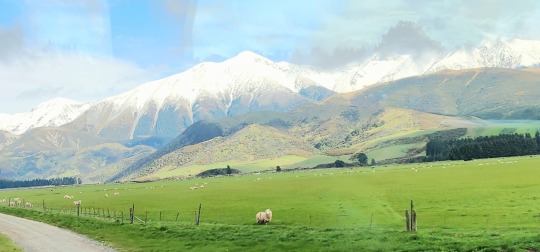
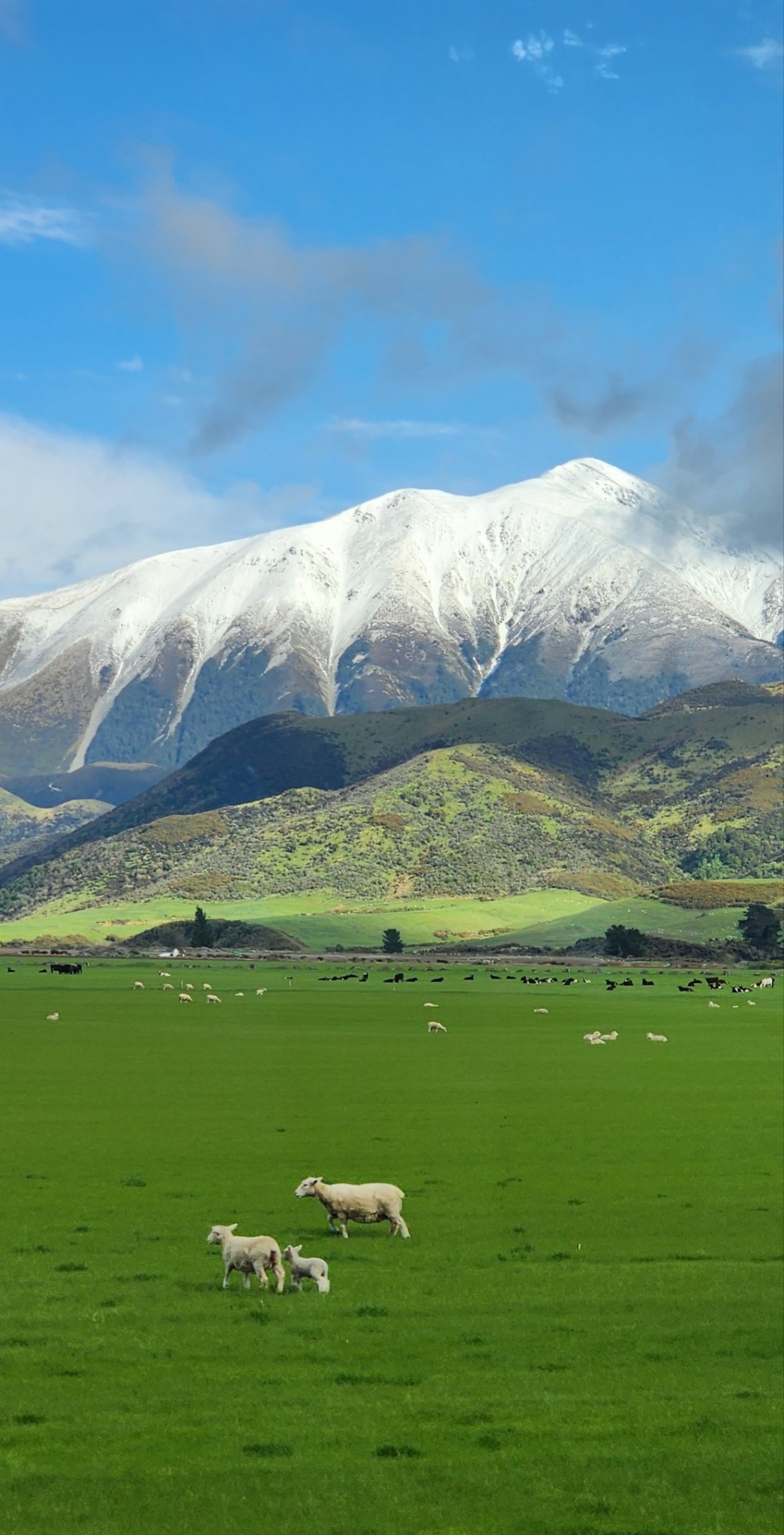
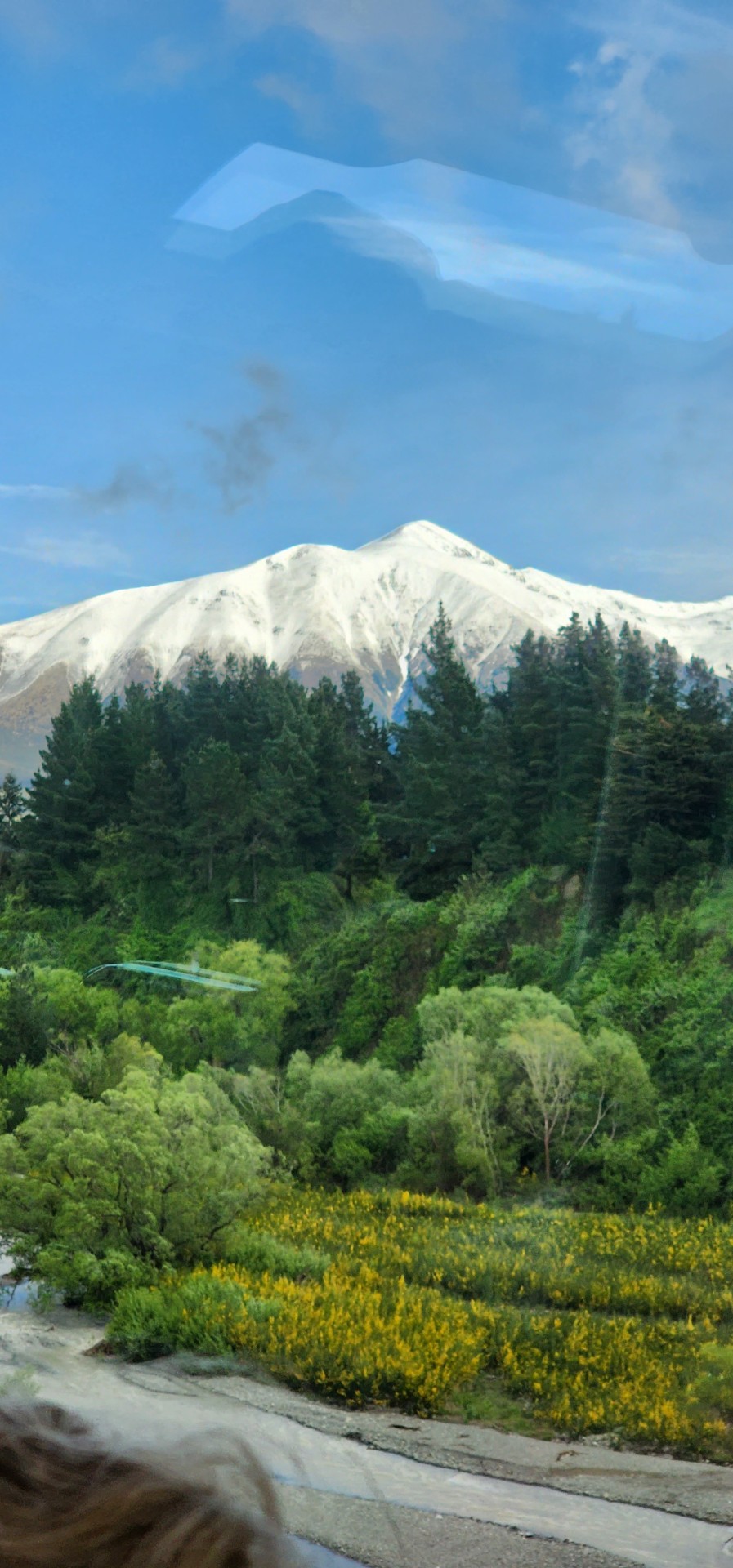

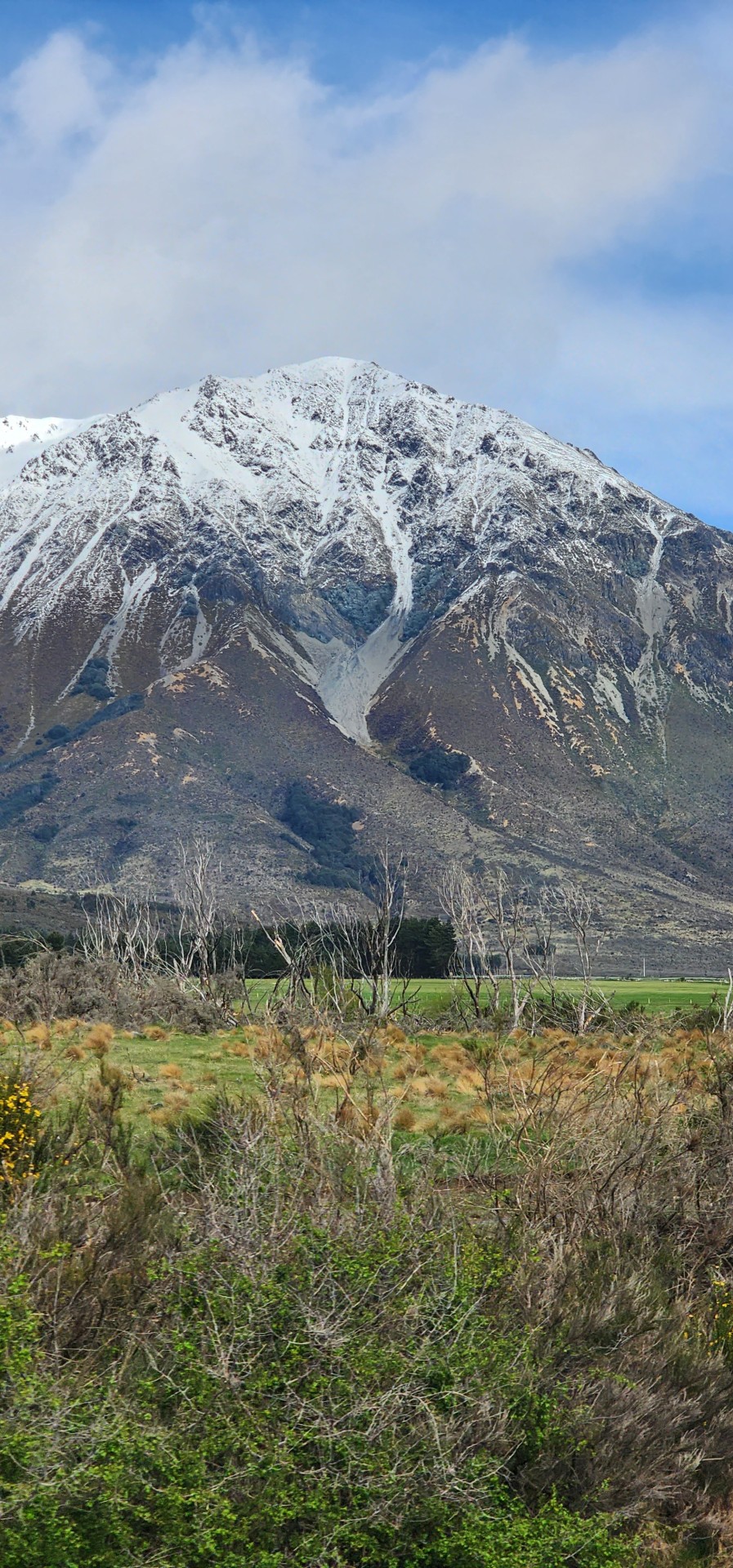

Trans Alpine train trip!
11 notes
·
View notes
Photo
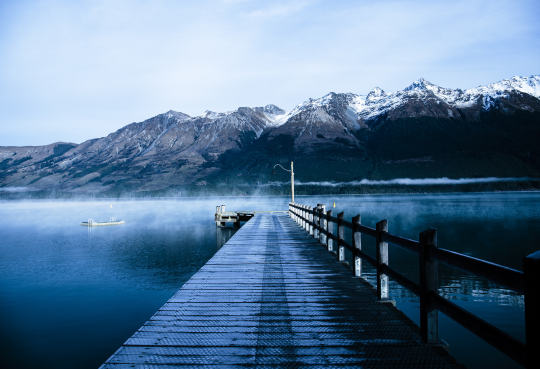
Glenorchy, South Island, New Zealand by BillyBedford
2 notes
·
View notes
Photo

Waterfall Southern Alps, NZ, Jeffrey Conley, 2011
#photography#jeffrey conley#black and white photography#new zealand#2010s#2011#waterfall#southern alps#american
57 notes
·
View notes
Text
misc. tag game
thank you for tagging me @blood-mocha-latte :)
a band you don’t like that many others do:
definitely Ocean Alley (i don't like their music and their most recent scandal was...interesting. also a guy i used to like but who ended up being a racist LOVED them so i have viscerally negative reactions whenever their stuff plays)
a childhood memory that you remember vividly:
i have a terrible memory, but the thing i remember best is taking our dog around the garden so he could get used to it when we first moved in, and he dug up 23 bones which the previous owners dog had buried around the place.
least favorite animal and why:
CRABS, I FUCKING HATE THEM
hot fandom take:
none, i just see bob stuff and i generally like it. although i do dislike the (not very common) infantilization of the actors or the version of the real life men they're portraying. it's just not something i personally agree with but it's not that big a deal
do you were any jewelry, if so, what’s your favorite piece:
i love rings and necklaces, but my favourite piece is my great-great grandmother's engagement ring which i inherited through my great grandmother. its gold and engraved with cool designs and a ruby and some diamonds.
a movie others liked but you didn’t:
the greatest showman. i detest that movie so much and im possibly a little dramatic about it.
three things you love about yourself:
i like my taste in wine
i really like my hair right now (just got it cut)
i like that i have such an active and extensive imagination
a place you hope to visit in the future and why:
ireland :) my family has a lot of connections to it
an actor that gets on your nerves and why:
jared leto <3
things you’re excited for in the nearby future?:
joining the tramping club at my uni this year (in nz we use the word tramping for hiking im not that strange i promise)
least favorite ship in a fandom you’re in:
legolas/gimli, i just think their story is cooler if its them working through several millennia of racial hate and enmity to become best friends to the point where they want to spend the rest of their lives together. the romance angle just overshadows that for me with them.
what’s the most toxic fandom you’ve been in?:
okay this is quite niche but its funny to me, the girlfailure community on instagram. like those people who make semi-ironic accounts posting about unhinged esoteric books or ideas, astrology, societal/cultural expectations, and religious interpretation of thoughts. its a load of bullshit but its so fucking funny to read and its mostly sarcastic (i think) so i don't feel bad for enjoying it.
list three things you find beautiful about life:
my mother, especially learning more about her and how she interprets life. i've realised recently that we're extremely similar despite having wildly different upbringings. she's also the best person i know.
new zealand :). nz is very isolated with a diverse range of biomes, there is such a large amount of untouched land that you could drive from the southern alps through farmland and native bush to the coast in about 3 hours.
cooking while listening to music!! i love it.
any dreams for the future?
completing my law and arts degrees and going on to do a masters in the uk somewhere.
how are you really feeling today?
extremely tired lol, i've got a doctors appointment tomorrow because it's been going on for several weeks.
tagging (no pressure):
anyone who wants to do it! i forgot i had this tab open so i think everyone's done it. if not, feel free to say i tagged you or something :).
11 notes
·
View notes
Text
#2098 - Verbascum thapsus - Great Mullein

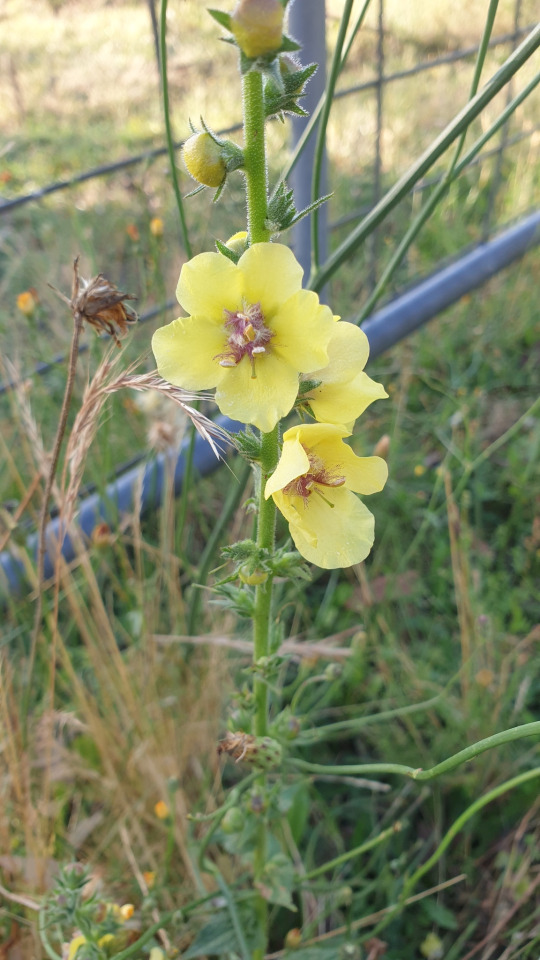

Another weed that I kept running into in New South Wales and in New Zealand - the last photo is from the southern end of a lake in the Southern Alps.
First scientifically described by Linnaeus in 1753, using the Latin word for the plant as the genus. Common names in English have included hig candlewick, Indian rag weed, bullicks lungwort, Adams-rod, spepherd's club, hare's-beard, poor man's blanket, feltwort, and flannel. Mullein itself derives from the French for soft.
Like the previous weeds, native to Europe, western Asia, and parts of northern Africa, but now invasive in most other parts of the world. Surprisingly, not a major weed in cropland - it doesn't tolerate shade from other plants, or tilling. Disturbed soil in sunny areas, on the other hand, is ideal.
These photos were from Tumbarumba in NSW, and Lake Pukaki in NZ.
5 notes
·
View notes
Photo
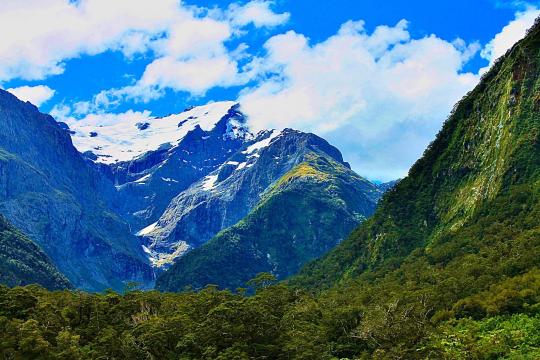
The southern alps in NZ [OC] 2256x1504
2 notes
·
View notes
Text
Ultimate Guide for Hiking Boots in New Zealand
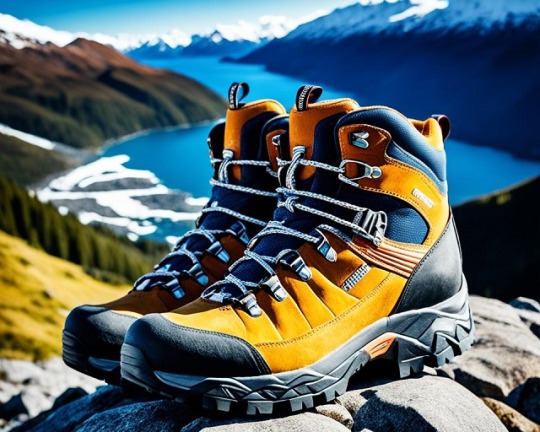
Welcome to the adventurer's primer on acing the quest for the perfect hiking boots in the land of the long white cloud, where the terrain is as diverse as the footwear options. Preparing adequately means securing the right hiking gear NZ enthusiasts rely on, with a special focus on the critical anchor of any hiker's attire: outdoor footwear New Zealand style. Whether you're scoping out the best hiking boot sales NZ offers, or you're looking to invest in quality adventure gear, understanding the fundamentals of what makes a steadfast pair of tramping boots is essential.
Drawing from authoritative sources like Tourism New Zealand, Department of Conservation (DOC), and leading Outdoor Equipment Manufacturers, this guide will cover a plethora of insights—from the innovative features that today's hiking boots boast to the environmentally conscious efforts that intertwine with the principles of outdoor exploration.
Key Takeaways
Understanding terrain-specific requirements for hiking boots in New Zealand.
The role of sustainability in selecting outdoor footwear.
Insights on the latest in tramping boot technology and design.
Comprehensive advice from the DOC on preserving natural habitats through proper gear use.
Seasonal considerations for hiking boot sales and offers in NZ.
Navigating adventure gear needs with expert recommendations.
Determining the Right Fit for Your Hiking Boots
When venturing into the wilderness, the fit of your hiking boots is as crucial as the backpack you carry. A good fit is paramount for comfort, preventing blisters, and avoiding foot injuries. Understanding the intricacies of hiking boot fit guide principles, including boot sizing and fit tests, can make all the difference. We'll explore how to find proper hiking footwear at sites like dwights that complements the shape of your feet and supports your adventures.
First and foremost, always try on boots with the same socks you plan to hike in, as this will affect the boot’s fit. Remember that feet often swell during long treks; size your boots to accommodate this. If possible, get your feet measured by professionals at outdoor retailers like REI, who offer comprehensive boot fitting services. Here, experts can also provide insights into selecting the most comfortable hiking boots for your foot shape and size.
"The right fit should feel snug but not tight, with enough room to wiggle your toes. When trying on hiking boots, walk around, find an incline to test heel lift, and press down into the boot to check for comfort and toe space." — Podiatry Association
Self-assessment at home can also guide you in determining the right fit. Press down at the front of the boot to ensure there's a thumb's width between your toes and the boot's end. Here’s a simple table you can use as a quick checklist for assessing boot fit:Fit CriterionDescriptionImportanceToe RoomSpace to wiggle toes without touching the front of the bootPrevents bruising on descentsHeel LiftMinimal lift when walkingAvoids blisters and hotspotsMidfoot SnugnessSecure fit without pinchingBetter support and stabilityAnkle Collar PaddingComfortable cushioning around the ankleEnhances comfort and supports ankle
Remember that the quest for finding the elusive perfect hiking boot is ongoing. Take advice from expert hikers, integrate their experiences with your own, and keep in mind that the best hiking boot for you is the one that fits perfectly, feels comfortable, and serves your hiking style and needs.
Tune into your feet, and they'll thank you for every step you take in the great outdoors, sporting the proper hiking footwear.
Tips to Find the Best Hiking Boots for Sale in New Zealand

Analyzing Boot Materials and Durability
Leather boots have long been praised for their durability and water resistance, essential for treks across the Southern Alps or the bush walks in Fiordland. Synthetic materials, on the other hand, offer a lighter weight option and often come with added breathability – a bonus for those high humidity days on the North Island. The longevity of your boots is paramount, so assess the construction, from the stitching to the sole design. Outdoor Gear Manufacturers are continually improving technologies to enhance durability, especially for boots designed to endure the rugged New Zealand landscape.
Where to Shop: Local Stores vs Online Retailers
Local Outdoor Stores – Not only do they provide a space to physically try on various hiking boots, but they also serve as hubs for community and personalized service. The advantage lies in the ability to receive immediate guidance from knowledgeable staff.
Online Hiking Gear – The convenience of online shopping is undeniable. With competitive pricing and a vast selection, online retailers are becoming increasingly popular. Be sure to review their sizing guides and return policies to make a risk-free purchase.
Choosing between shopping at a brick-and-mortar outdoor store NZ and purchasing online comes down to personal preference and priorities. Some hikers value the in-store experience and the ability to test boots firsthand, while others prefer the deals and diversity available from online sources.
Reading Customer Reviews and Expert Recommendations
With an abundance of resources at our fingertips, taking the time to read through customer reviews and expert recommendations is a must. Websites like Outdoor Gear Lab provide in-depth analyses and comparisons that can sway your decision toward the boot most suited to your needs. E-commerce trends indicate that shoppers are increasingly leaning on peer reviews and expert opinions to inform their buying choices.
In the market for durable hiking boots that won't let you down? Remember these three pillars: scrutinize the boot materials for long-lasting wear; consider whether to support local outdoor stores in NZ or take advantage of the vast options in online retail; and weigh the insights gleaned from customer reviews and experts in the field. Armed with this information, you're ready to step confidently into your next adventure.
Essential Features of Quality Hiking Boots
When it comes to tackling the diverse terrains of New Zealand, from the sandy shores to the alpine passes, the right hiking boots are not just a recommendation—they're a necessity. Each feature of a hiking boot plays a specific role in ensuring safety, comfort, and longevity of your outdoor adventure. Let's delve into some of the most critical aspects you should consider.
Understanding the Importance of Ankle Support
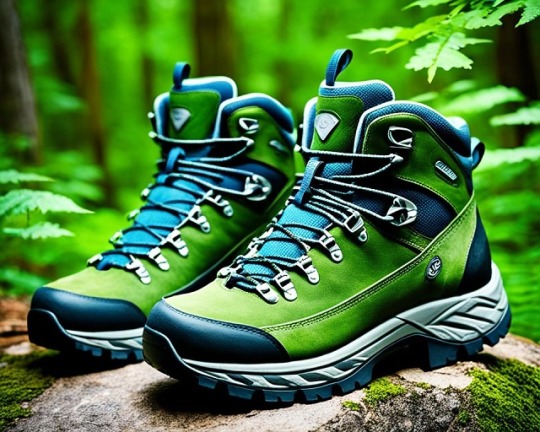
The Role of Sole Traction in New Zealand Terrain
New Zealand's hiking stages are a spectacle of nature, presenting challenges like slippery wet rocks and loose gravel paths. Here's where sole traction joins the fray. The design of the sole—tread patterns, rubber compounds, and lug depth—all contribute to a boot's grip on the landscape. For the notoriously slippery routes, look for boots with aggressive, multi-directional lugs that bite into the terrain, providing that all-important footing stability.
Selecting Boots for Weather Conditions and Seasons
As you traverse through New Zealand's varying climates – from the temperate north to the cooler southern regions – your choice in hiking boots needs to reflect these changes. Seasonal hiking gear is pivotal for adapting to the elements, and waterproof boots are at the forefront. Waterproof features coupled with breathability ensure your feet stay dry from external moisture without trapping sweat inside. Whether you're crossing streams or caught in an unexpected downpour, waterproofing can prevent a world of discomfort.
Investing in superior ankle support hiking boots, understanding the significance of sole traction, and selecting the proper seasonal hiking gear including waterproof boots, will not only enhance your trekking experience but also safeguard your feet against the relentless demands of New Zealand's beautiful, yet often unforgiving, landscapes.
Maintenance and Care for Long-lasting Hiking Boots
Embarking on adventures in New Zealand's diverse landscapes requires not only the right hiking boots but also a commitment to regular boot maintenance. Whether you've traversed the volcanic terrains of the North Island or tread through the Southern Alps, your outdoor footwear bears the brunt of nature's elements. To ensure that your trusted hiking boots stand the test of time—and countless trails���a systematic approach to hiking boot care is essential.
Cleaning hiking boots after each journey prevents dirt and grime from breaking down the materials that keep your feet protected. Boot manufacturers recommend removing insoles and laces, and gently brushing off mud and debris. Treat your boots to a thorough yet gentle wash with a specialized cleaner and re-waterproof them periodically to maintain their resilience in damp conditions. Not only does this practice assist in preserving outdoor footwear, but it also sustains the overall comfort and effectiveness of your gear.
Properly storing your hiking boots in a cool, dry place safeguards them against the wear and tear of the elements when not in use. If damage does appear, don't hesitate to seek out specialty footwear repair services to revive your boots rather than prematurely purchasing a new pair. Taking heed of the wisdom shared by outdoor enthusiasts' blogs, you'll discover that boot maintenance is akin to caring for a trustworthy friend—essential for the longevity of your shared journey on the trails of New Zealand.
0 notes
Text
Ultimate Guide: Packing for a Hiking Trip at New Zealand
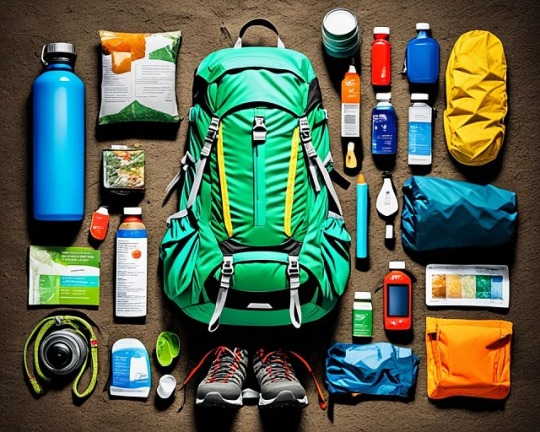
With majestic landscapes ranging from tranquil coastal walkways to rugged mountainous terrains, New Zealand provides the perfect backdrop for every hiker's dream. However, the key to unlocking a truly remarkable experience lies in preparation. Every twist and turn on the Kiwi trails demands thoughtful planning, and our detailed guide aims to help you navigate these challenges with ease. Strap on your boots, and let's get ready to pack your gear for the adventure of a lifetime!
Key Takeaways
Create your personalized New Zealand hiking checklist for a worry-free trek.
Research and gather trekking essentials suited to New Zealand's diverse terrains.
Invest in quality outdoor adventure gear to enhance your hiking experience.
Equip yourself with knowledge about backpacking in New Zealand to make informed decisions.
Consider this guide as your trusted companion in preparing for your next big hike.
Stay tuned for in-depth insights into selecting the right gear and clothing in the sections to follow.
Understanding New Zealand's Wilderness
Embarking on a journey through New Zealand's captivating wilderness requires not just a spirit of adventure, but also a thorough understanding of the diverse landscapes that await. From the sandy stretches of coastline to the majestic Southern Alps, every trail presents its own set of wonders and challenges. Let's delve into the rich tapestry of New Zealand's great outdoors to ensure your trek is as fulfilling as it is safe.
Various Hiking Trails and Their Challenges
Each path carved through New Zealand's rugged terrain comes with its own narrative of difficulty and splendor. The trails difficulty can range widely, calling for careful consideration when planning an expedition. Whether it's the coastal allure of the Abel Tasman Walk or the alpine challenges of the Milford Track, understanding what each hike demands in terms of skill, equipment, and endurance is crucial to a successful outdoor experience.
youtube
For instance, the Routeburn Track may enchant you with its cascading waterfalls but may also test your limits with steep climbs. The Whanganui Journey, on the other hand, offers a unique experience as it is primarily a paddle down the Whanganui River, showcasing the multifaceted nature of New Zealand's outdoor adventures.
Weather Patterns and Seasonal Considerations
The hiking seasons NZ offer are as varied as the landscapes themselves. Weather patterns can fluctuate unexpectedly, and hikers must be prepared for sudden changes in conditions. The warm glow of summer may be the perfect backdrop for a coastal hike, while winter's crisp air adorns alpine passes with snow, presenting both beauty and a substantial challenge. Anticipating these seasonal variations is key to packing appropriately and ensuring a pleasant journey through the heart of New Zealand's natural splendor.
Unique Flora and Fauna to Be Mindful Of
New Zealand is a haven for endemic species that flourish in its isolated ecosystems. The kiwi, kākāpō, and tuatara are just a few examples of the unique creatures that call these islands home. As hikers, it is our duty to respect these native inhabitants by practicing responsible environmental conservation. This not only protects the wildlife but also preserves the opportunity for future generations to enjoy the untouched beauty of New Zealand's landscapes. Whether you're traversing a sub-tropical forest or exploring grasslands, remember that you are a guest in the home of an incredible array of plants and animals.Trail NameDifficultyLengthBest SeasonNotable SpeciesAbel Tasman WalkModerate60kmSummerTui, WekaMilford TrackChallenging53.5kmEarly FallKea, Fiordland Crested PenguinRouteburn TrackModerate to Challenging32kmSpringYellow-crowned Parakeet, NZ FalconWhanganui JourneyModerate145km (by water)Late SpringLongfin Eel, Blue Duck
Essential Hiking Gear List
For those ready to brave the trails, equipping yourself with the right boots and hiking equipment at sites like dwights.co.nz is the first step to a successful adventure. Whether you're scaling mountains or trekking through valleys, practicality and preparedness are key. In this section, we'll highlight the most crucial items you'll need to pack before heading out into the wilderness.
Durable Backpacks and Stuff Sacks
Choose a backpack that not only fits comfortably but is also designed to withstand the ruggedness of outdoor exploration. Quality trekking packs are essential for housing all your gear, and they often come with features like hydration reservoirs, rain covers, and multiple compartments for easy access and organization. Combining these with stuff sacks, you can keep your gear sorted and protected from the elements. Below is a selection of highly recommended gear:
Osprey Atmos or Aura AG series for their anti-gravity suspension systems.
Sea to Summit Ultra-Sil stuff sacks for their lightweight and durable siliconized fabric.

Navigation Tools: Maps and GPS Devices
In the realm of navigation essentials, never underestimate the power of a good map and compass alongside modern GPS devices. These tools collectively ensure that you can always find your way, even when signals fail or the path becomes less clear. Brands like Garmin and Suunto provide waterproof and durable GPS units designed specifically for the demands of the great outdoors.
Survival Kit: First Aid and Emergency Supplies
Lastly, safety gear is not an afterthought but a priority. A well-stocked survival kit with first aid supplies and emergency equipment can be a lifesaver in critical situations. Essentials include bandages, antiseptic wipes, blister treatments, as well as emergency blankets and a whistle for attracting attention. It is advisable to tailor your kit to the specifics of your hike and personal needs.
Remember, a hiker's mantra is to be prepared for anything nature throws your way. With this essential hiking gear list in hand, you're one step closer to embracing the adventure that awaits!
Selecting the Right Hiking Boots for New Zealand Terrain

To navigate through rocky paths, soft muddy routes, and the occasional snowy terrain, it's crucial to find boots that offer comprehensive protection. From seasoned brands like KEEN and Merrell, known for their waterproof hiking boots, to innovative designs from Salomon and The North Face, offering the latest in trekking footwear technology, the choices are vast. Yet, the right pair should suit not just the trail ahead but your feet's unique contours for a secure and pleasant hike.
Grip: A boot's sole should have deep lugs that allow for confident strides on diverse surfaces.
Durability: Premium materials shield against wear and tear, ensuring your boots stand the test of time and terrain.
Comfort: Adequate cushioning and support are non-negotiable for long-distance treks.
Water-Resistance: A breathably waterproof membrane, like Gore-Tex, is indispensable for an enjoyable hike in damp conditions.
To extend the lifespan of your trekking footwear, routine maintenance is as crucial as selection. After each hike, remove any dirt or debris, and when necessary, reapply a water-proof treatment to keep your boots in prime condition. Moreover, always allow your boots to air dry naturally, away from direct heat, to preserve their structural integrity. By doing so, your investment in the best hiking boots NZ has to offer will yield countless treks of outstanding performance.
Layering Strategies for Comfort and Protection
Embarking on a hike through New Zealand’s ever-changing landscapes means preparing for an array of weather conditions. The key to maintaining comfort and safety lies in mastering the art of layering with proper hiking attire. Selecting the right combination of thermal layers, waterproof jackets, and leveraging outdoor clothing technology will make all the difference in your outdoor adventure.
Base Layers for Moisture Management
Starting close to the skin, the base layer's primary function is to regulate your body temperature by moving sweat away from your body. Look for moisture-wicking fabrics like Merino wool or synthetic blends, which keep you dry and comfortable during strenuous hikes.
Insulation Layers for Warmth
To combat the chill, especially in higher altitudes, insulation layers are essential. Mid-layers such as fleece jackets or down vests provide the warmth you need without adding excessive bulk, making sure you stay agile on the trails.
Outer Layers for Wind and Rain Proofing
Finally, the outer layer protects you from the elements. Whether facing gusty winds or unexpected downpours, a robust waterproof jacket with breathable fabric is a hiker's best shield against the elements. Technologies like Gore-Tex offer both water resistance and breathability.Fabric TypeBenefitsRecommended UseMerino WoolTemperature Regulation, Odor ResistanceBase LayerSynthetic FleeceWarmth, LightweightMid LayerGore-TexWaterproof, Windproof, BreathabilityOuter Layer
By understanding and applying these layering principles, hikers can brave the dynamic conditions confidently, staying dry, warm, and secure from the base camp to the summit. Remember, proper preparation with high-quality outdoor clothing technology is not a luxury; it's a necessity for any serious adventurer.
Packing Nutrition and Hydration for the Trail
Embarking on the rugged trails of New Zealand's wilderness requires not only physical stamina but a well-thought-out plan for hiking nutrition and hydration. Appropriate fuel in the form of trail snacks and meals is a cornerstone of outdoor adventure, ensuring a constant supply of energy for the journey ahead. Likewise, understanding and employing effective hydration systems and water purification methods are vital to maintaining peak performance amidst nature's challenges.
For sustained energy, hikers should focus on nutrient-rich foods that offer a balance of proteins, complex carbohydrates, and healthy fats. Trail snacks such as nuts, seeds, and dried fruits are excellent for on-the-go munching, while energy bars and gels provide a quick, convenient calorie boost. When it comes to meal planning, dehydrated meals are a lightweight option that only requires boiling water, making them an ideal choice for the intrepid trekker.
Maintaining hydration is equally crucial. Modern hydration systems, like hydration bladders and insulated water bottles, ensure that water is readily accessible without the need to stop and unpack. When traversing backcountry terrain, reliable water purification techniques—be it chemical tablets, UV light purifiers, or filtration systems—are non-negotiable to safeguard against pathogens commonly found in untreated water sources.Trail SnackBenefitsHydration ProductFeaturesMixed NutsHigh in protein and healthy fats, long-lasting energyHydration BladderHands-free, large capacity, convenient tube for sippingEnergy BarsCompact, variety of flavors, quick digestible carbsInsulated Water BottleKeeps water cool, durable, eco-friendlyDried FruitsNatural sugars for a quick energy spike, vitaminsUV Water PurifierDestroys over 99.9% of pathogens, portable, quick purification processDehydrated MealsLightweight, easy preparation, energy-denseWater Filtration SystemRemoves particulates and microorganisms, perfect for streams and lakes
Armed with a plan for optimal hiking nutrition and modes of hydration, adventurers can face the breathtaking but demanding New Zealand trails with confidence. Choosing the right mix of trail snacks, meals, hydration systems, and water purification strategies is not just a matter of sustenance but an integral part of trail safety and enjoyment.
Technical Gadgets and Tools for a Smooth Hike
Embarking on a New Zealand trek transforms into an even more gratifying experience when you arm yourself with the latest hiking technology. In an age where tech aids significantly in enhancing outdoor adventures, discerning hikers are recognizing the value of innovative gadgets to bolster safety, navigation, and convenience. From power solutions that harness the sun's energy to smart devices guiding your route, these high-tech tools are reshaping the trekking experience.
Utilizing Solar Chargers and Power Banks
Keeping your electronic devices charged is essential for both convenience and safety during long hikes. Portable charging solutions such as solar chargers and power banks have become invaluable assets on the trail. They provide hikers with the means to sustain their smartphones, GPS devices, and cameras without access to electrical grids. Solar chargers, in particular, capitalize on New Zealand's abundant daylight, offering an eco-friendly method to stay powered up and connected.
High-Tech Hiking Poles and Trail Apps
In the quest for stability and support, modern trekking poles have evolved, integrating technology that does more than just aid your stride. Advanced materials for lightweight strength and shock absorption are just the beginning. Paired with interactive trail navigation apps, hikers now have access to detailed maps, terrain analysis, and waypoint marking, all contributing to a secure and informed hiking journey. These apps not only guide your steps but also enrich your understanding of the terrain ahead.
Safety Tech: Personal Locator Beacons (PLB)
When solitary beauty is contrasted with the potential risks of remote wilderness, safety precautions become non-negotiable. Emergency locator beacons stand out as a critical piece of safety gear for any backcountry adventurer. A personal locator beacon (PLB) can be a lifeline in dire situations, sending out signals to rescue services despite the absence of traditional communication networks. They exemplify the pinnacle of hiking safety technology, providing peace of mind to both hikers and their loved ones.
0 notes
Text
The Kiwi Craze for Bags: A Glimpse into New Zealand's Bag Culture

Introduction
New Zealand, often referred to as the Land of the Long White Cloud, is known for its stunning landscapes, unique wildlife, and vibrant culture. However, one aspect of Kiwi life that often goes unnoticed is the nation's love affair with bags. From the iconic jute shopping bags to the traditional Māori kete, bags in New Zealand hold a special place in the hearts of its people. In this blog, we'll delve into the fascinating world of bags in NZ and explore their significance in this beautiful country.
Jute Shopping Bags: The Kiwi Icon
One of the most recognizable symbols of New Zealand's bag culture is the humble jute shopping bag. These eco-friendly bags have become synonymous with grocery shopping in the country. Supermarkets across NZ offer jute bags as a sustainable alternative to plastic bags, and many Kiwis can be seen carrying them while doing their weekly shopping.
The popularity of jute bags in New Zealand is a testament to the nation's commitment to environmental sustainability. These bags are not only durable and reusable but also biodegradable, making them an excellent choice for eco-conscious shoppers.
The Māori Kete: A Cultural Treasure
While jute bags may dominate the modern shopping scene, the traditional Māori kete holds immense cultural significance in New Zealand. The Māori people, the indigenous population of Aotearoa (New Zealand), have been creating and using kete for centuries.
Kete are woven baskets or bags made from flax leaves, and they come in various sizes and shapes. They are used for a wide range of purposes, including carrying food, tools, and personal belongings. Each kete is a work of art, often featuring intricate weaving patterns and designs that reflect the Māori culture and heritage.
These beautiful bags are more than just functional items; they are a symbol of Māori identity and craftsmanship. Many contemporary Māori artists continue to create kete, preserving this traditional art form and ensuring that it remains a vital part of New Zealand's cultural fabric.
Kiwi Fashion and Designer Bags
New Zealand has a burgeoning fashion industry, and Kiwi designers are making their mark on the global stage. Bags, as essential fashion accessories, play a significant role in this industry. Local designers create a wide range of bags, from stylish handbags to practical backpacks and everything in between.
Kiwi fashion is often influenced by the country's natural beauty, and you'll find many bags adorned with designs inspired by native flora and fauna. Additionally, New Zealand's commitment to sustainability is reflected in the materials used by these designers, with many opting for eco-friendly and locally sourced materials.
Outdoor Adventure Bags
New Zealand's breathtaking landscapes make it a haven for outdoor enthusiasts. Whether it's hiking in the Southern Alps, kayaking in the Marlborough Sounds, or cycling the Otago Rail Trail, Kiwis love their outdoor adventures. As a result, bags designed for outdoor activities are in high demand.
Specialized backpacks, dry bags, and hiking packs are popular among those who seek adventure in the great outdoors. These bags are designed to withstand the rugged terrain and unpredictable weather that New Zealand has to offer, making them essential companions for any outdoor excursion.
#italian leather handbags#leather bags in new zealand#leather handbag in new zealand#designer leather handbags#handbags#italian leather bags#leather bag
0 notes
Text
The Ultimate Guide to Camping Chairs in New Zealand
When it comes to enjoying the great outdoors in New Zealand, one of the essential pieces of equipment that should never be overlooked is a high-quality camping chair. Whether you're planning a serene weekend getaway in the lush forests of Fiordland or embarking on an adventurous hiking expedition in the Southern Alps, a comfortable and durable camping chair can make all the difference in your outdoor experience. In this comprehensive guide, we'll delve into the world of camping chairs in New Zealand, exploring the types, features, and top recommendations to ensure you have the best seat in the house, or rather, the great outdoors.
Types of Camping Chairs
1. Folding Camping Chairs
Folding camping chairs nz are the most popular and versatile option for campers in New Zealand. These chairs are known for their portability and ease of use. They are designed to be compact and lightweight, making them ideal for backpackers and car campers alike. The convenience of folding chairs lies in their ability to be easily stowed away in your vehicle or backpack, ensuring you always have a comfortable seat at hand.
2. Camping Rocking Chairs
For those seeking a touch of luxury in the wilderness, camping rocking chairs offer a unique and relaxing experience. These chairs combine the comfort of a traditional camping chair with the soothing motion of a rocking chair. Imagine reclining by a serene lake, gently rocking back and forth while sipping on your favorite beverage—a camping experience like no other.
3. Camping Director's Chairs
Camping director's chairs are a popular choice for those who value style and functionality. These chairs often come with a side table and pockets for holding essentials like snacks, books, or even a tablet. With their sturdy build and comfortable design, camping director's chairs are perfect for campers who like to relax in style.
4. Camping Loungers
If you're looking for maximum comfort, camping loungers are the way to go. These chairs are designed for ultimate relaxation, with adjustable reclining positions, cushioning, and even built-in cup holders. While they may be bulkier than other camping chairs, they're perfect for campers who prioritize comfort above all else.
Key Features to Consider
1. Weight Capacity
When choosing a camping chair, it's crucial to consider the weight capacity. Ensure that the chair can support your weight comfortably. In New Zealand's rugged terrain, a sturdy chair is essential.
2. Portability
For those planning to hike to their camping destination, portability is key. Look for chairs that are lightweight and easy to carry. Many folding chairs come with carry bags for added convenience.
3. Durability
New Zealand's variable weather conditions can be tough on outdoor equipment. Opt for camping chairs made from durable materials that can withstand rain and UV exposure.
4. Comfort
Comfort is paramount during your outdoor adventures. Look for chairs with padded seats, armrests, and ergonomic designs. Camping should be enjoyable, after all.
5. Set-Up Time
Consider how quickly and easily you can set up your camping chair. Some chairs require minimal assembly, while others are ready to use right out of the bag.
Top Camping Chairs in New Zealand
Now that we've covered the types and key features to consider, let's take a look at some of the top camping chairs available in New Zealand.
1. Kiwi Camp Chair
The Kiwi Camp Chair is a beloved choice among New Zealand campers. It's known for its rugged durability and comfortable design. With a weight capacity of up to 150kg, it's suitable for campers of all sizes.
2. Adventure Ridge Folding Chair
For backpackers and hikers, the Adventure Ridge Folding Chair is an excellent choice. It's lightweight, compact, and easy to carry, making it perfect for those on the move.
3. OZtrail Sun Lounge
If you're looking for ultimate comfort, the OZtrail Sun Lounge is a luxurious option. Its adjustable reclining positions and padded seat make it a favorite for those who want to relax in style.
4. Coleman Oversized Quad Chair
For campers who value convenience, the Coleman Oversized Quad Chair is a top pick. It comes with a built-in cooler, cup holder, and side pocket for all your camping essentials.
Conclusion
In conclusion, selecting the right camping chair in New Zealand can greatly enhance your outdoor adventures. Whether you're exploring the stunning landscapes of the North Island or the rugged beauty of the South Island, a comfortable and durable camping chair is a must-have. Consider your specific needs, such as portability, comfort, and durability, when making your choice.
Remember, the best camping chair is the one that suits your unique preferences and camping style. So, gear up, find your ideal camping chair, and get ready to experience the breathtaking beauty of New Zealand's great outdoors in comfort and style.
0 notes
Text
HELICOPTER RIDE AND MORE!!
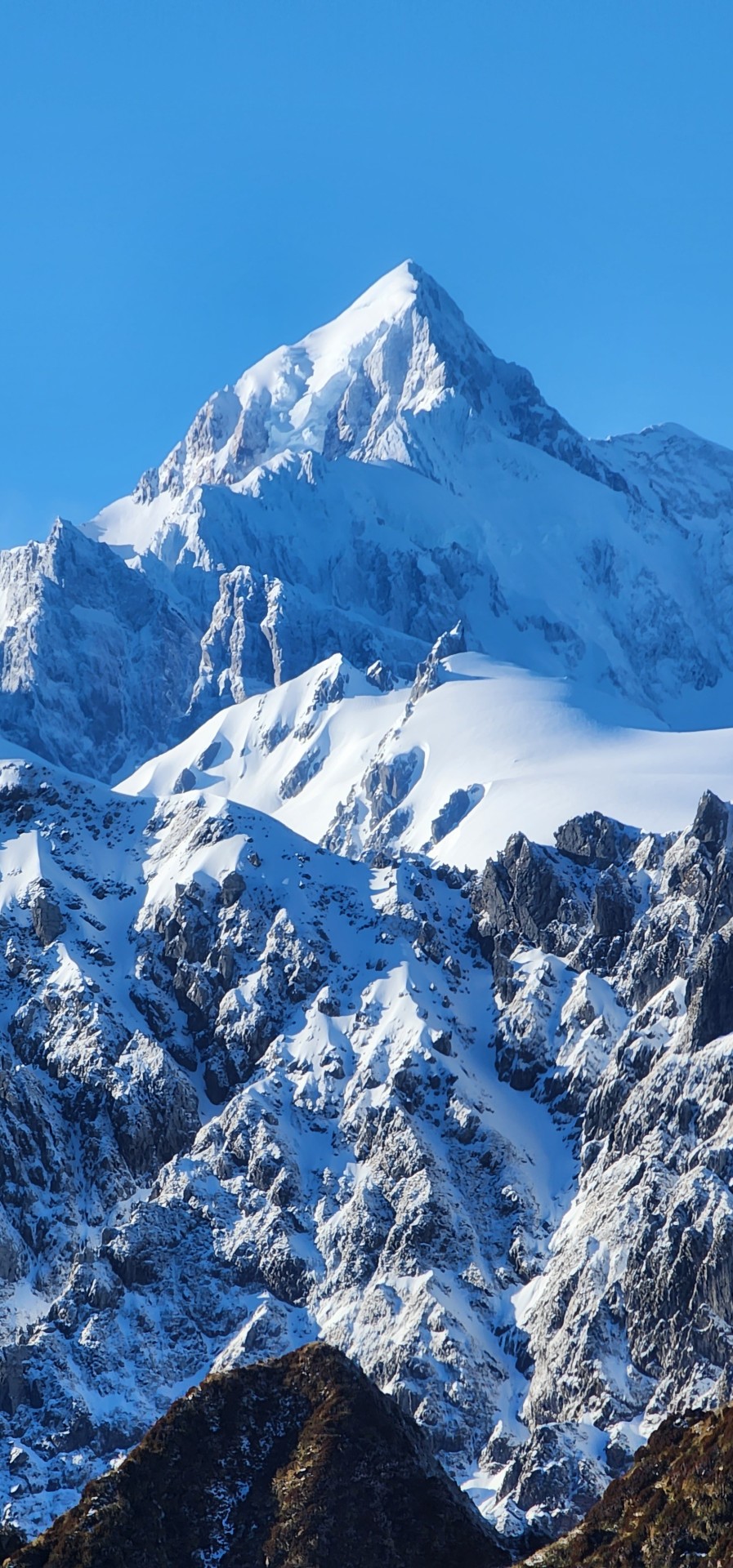

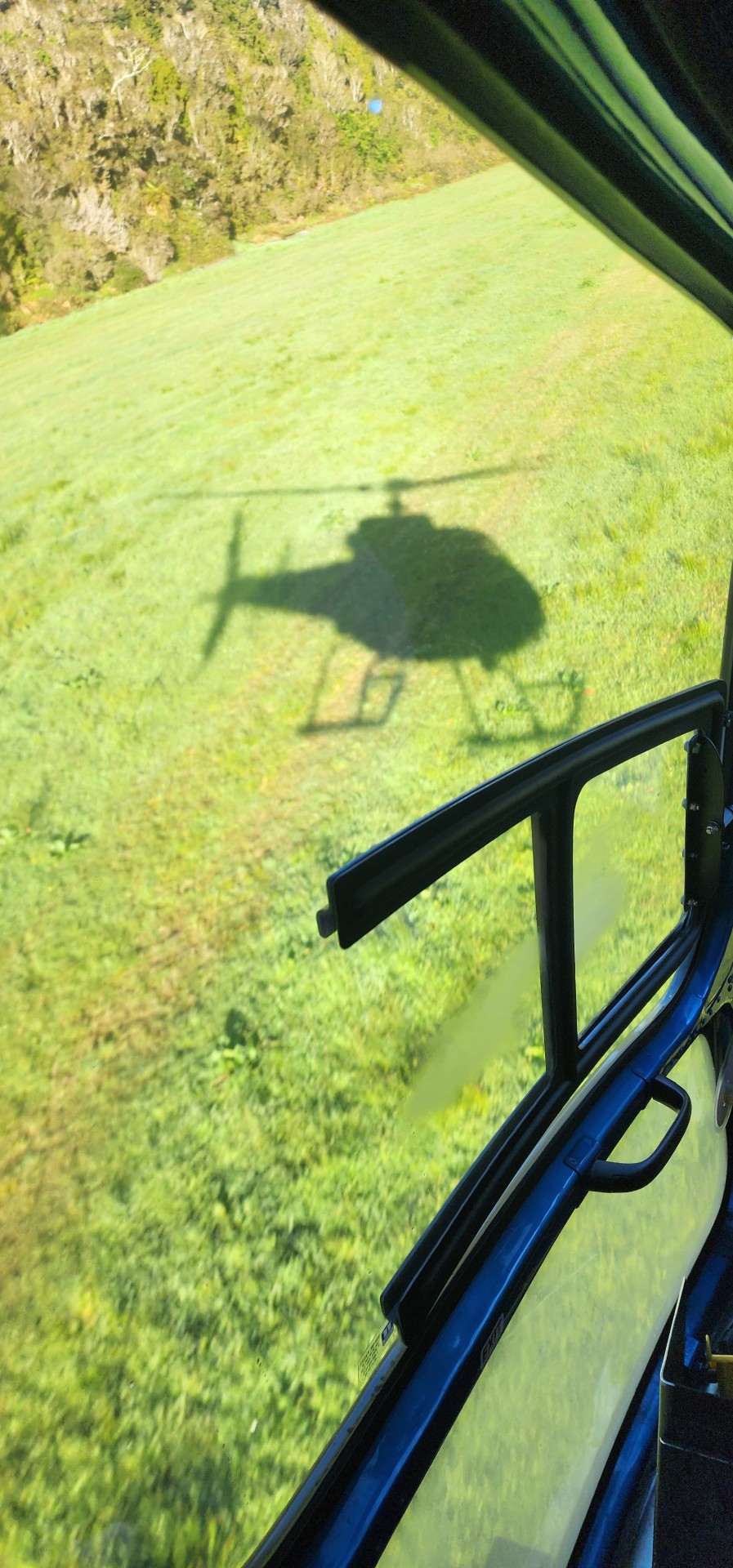
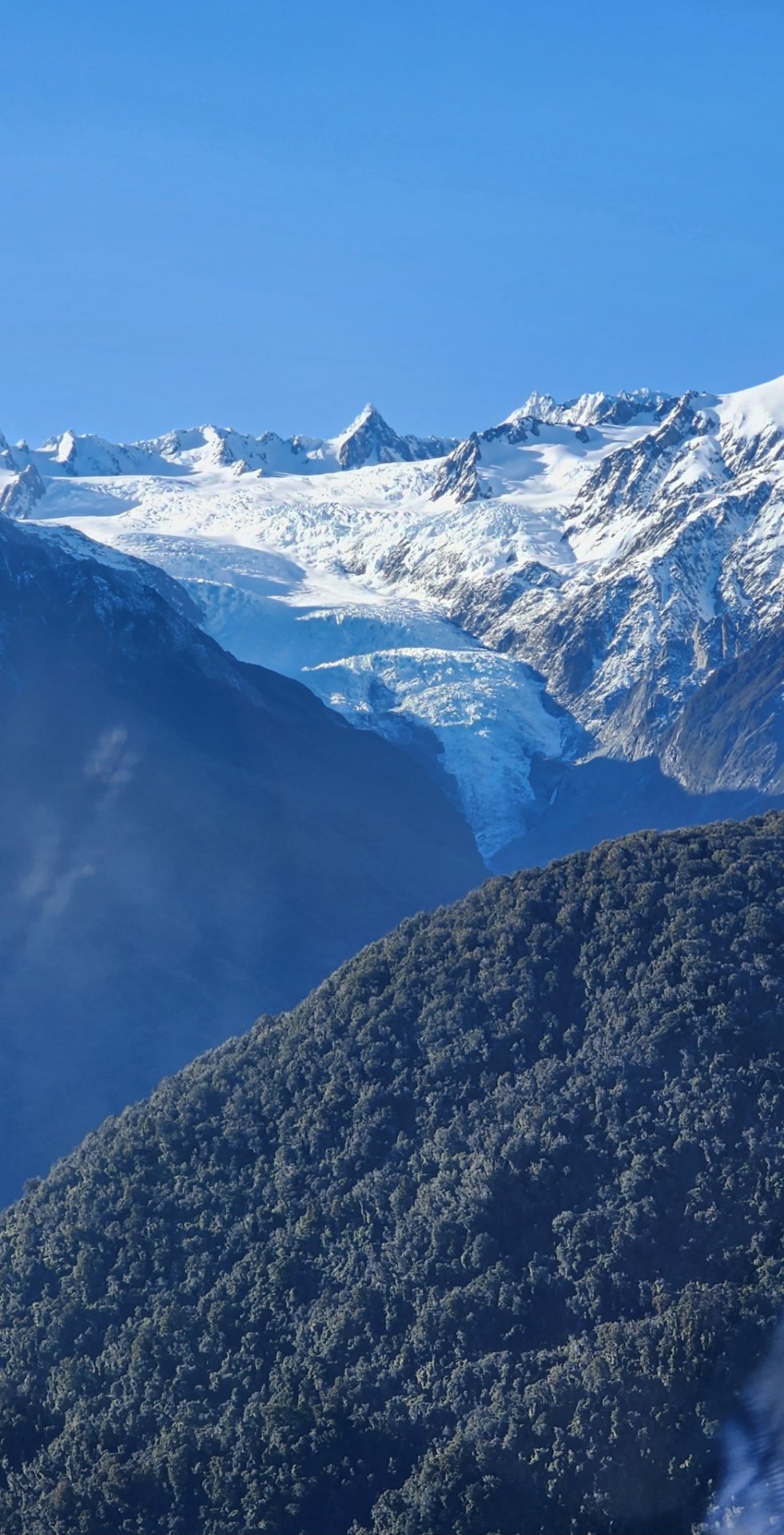



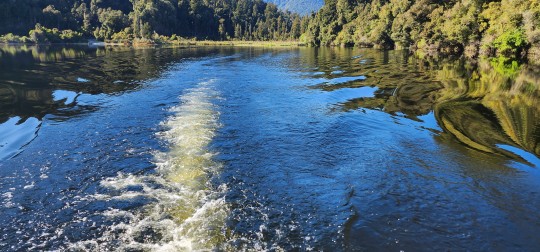
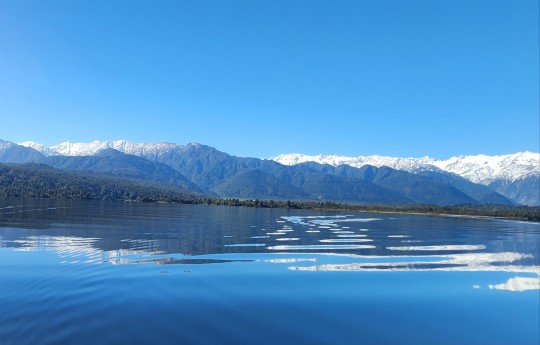

#New Zealand#South Island#Mount Cook#Franz Josef Glacier#Fox Glacier#helicopter ride#Southern Alps NZ
3 notes
·
View notes
Text
Kiwi Gee SqueeGee part 1
As mentioned in the previous post (written in 2020) I headed to the airport to await the arrival of 4 tired and laden friends; LJ, Mo, Andy and Alessa. The flight was a little delayed, so I did end up waiting quite a while in the airport, all the while racking up the parking, but it was so nice to see them all come through arrivals! I had slightly overestimated how big my car was, but people and bags tetrassed in we drove back towards my place, pointing out sights on the way back, that couldn’t be seen because the suitcases were covering their faces – but the thought was there! The first hostel was down the road from my place, it was roughly mid-afternoon when we got down there, and I wanted to stave off the jet lag, so we dropped off belongings and strolled down to the centre of Devonport for a pint and some nibbles at The Patriot. Later, we headed into town to meet Viv and Andy for dinner on their last night, a quick catnap for a couple of my companions on the 10 minute ferry ride, and we stuffed our faces with pizza. The chat coined some phrases that stayed with us for the whole trip; I can’t remember the context, but I think it had something to do with the spider massacre - ‘I like what you’ve done with your hair.’
The first full day we spent going around Devonport and Auckland, we started up Mount Victoria to see the blazing sun shining across the city centre and the obligatory ‘can we all fit on the gun’ picture. Another short ferry journey took us into town and a scenic walk along the waterfront of the viaduct and the silo park before deciding to go into the Maritime Museum. (I got crazy strong memories of having been there before, in 2008 maybe?) The evening plans were to go up the Auckland sky tower, we had planned the time to get a good view while still light but then also see the sunset and city lights come on, as it had been clear and sunny all day, we were primed for a beautiful view. In true Auckland style, the weather completely shifted and low cloud cover blocked all the windows; you couldn’t see anything outside. Undeterred we hung around for a bit and eventually there were some gaps in the clouds which meant we got our view and took some quick snaps. We returned to the hostel for a quick dip in the hot tub, a great booking had it not been the first couple of nights, but as everyone started to flag pretty quickly; we called it a night.
Ideally, after such a long flight, you kinda want to start slow and take a few days to settle, but with such a short timeframe we didn’t have that luxury. So, day 2 we drove down to the airport to fly to the South Island, quick panic after realising I forgot to check oil levels since the road trip and discovered the dip stick was dry, however, the local garage filled me up and we didn’t lose much time. Then getting to the airport to discover time doesn’t exist for domestic NZ travel and we could just take our food and open drinks through security and basically just stroll onto the plane anyway. The flight to Queenstown is not very long, so pretty soon we were on the other side picking up our hire car/tank, I can’t remember what type it was, but it was massive and super comfy with a great engine to get up and over the snowy peaks! Our first activity booking was the following morning near Franz Joseph which is 4+ hours’ drive up the west coast, I took the first stint driving which involved mountains and snow but did lead to some incredible views towards the Southern Alps. It was still cold enough for the ranges to be topped with snow and there was a bit on the ground as we went up and over Arrow Junction, but thankfully not enough to hamper our journey which was already long enough! I had a NZ sim card with data so hadn’t bothered to download any music as I figured we could just Bluetooth and play whatever people wanted to listen to on Spotify, forgetting that the South Island is basically unpopulated and covered in mountains, so the little signal there is, couldn’t get to us… No music? No worries when you’ve got me and LJ in the car, a quick rendition of ‘Joseph, Pharaoh’s number 2’ lead to recreating the whole of Joseph and his Technicolour Dreamcoat start to finish, word for word. Alessa, who didn’t know the show, was thrilled; and now doesn’t need to see it. A fairly uneventful journey, minus a few squashed possums (seriously I tried to steer away when I spotted it and it jumped under my wheel) we found a random roadside pub to grab something hot and filling before getting to our destination around half 9/10.
We woke bright and early the next morning and wandered down to the wilderness tour centre who loaded us up in the van and took us to Lake Mapourika for a kayak. The water in this lake was freezing, almost black in colour due to tannins from the surrounding forest and super reflective, when those reflections involve snow-capped mountains including Aoraki or Mount Cook you’re thankful for the photographer that comes with the excursion. We were in 2 person Kayaks which meant I shared with a person from another group, but I got to sit in the back so free reign to not paddle. I think going across the lake and back was something like 8km worth of kayaking, so I was thankful for the opportunity to not pull my weight! On the far end of the lake, the water tapers into the Okarito River which is surrounded on each side by bush, within this bush is a kiwi sanctuary for the Rowi which only live here and have a population of about 600 total! We did not see any as it was the middle of the day, and they tend to burrow underground, but it was nice to know they were there. We kayaked back across the lake, halfway across we were given the opportunity to bunch our canoes together and stand up for a photo if we wanted. I didn’t wanna fall in, but other brave souls got up and were rewarded with an amazing photo with reflective lake and Aoraki backdrop. With another 4 or so hour journey back to the Queenstown area, we didn’t want to hang around too long but couldn’t be in the area of a glacier without seeing it. We grabbed some simple lunch bits from the supermarket in town and hopped in the car to the Franz Josef glacier walk. A gentle wander through the woods for about 25 mins and we came upon a great spot to sit and eat our lunch while looking at a glacier – can’t say you do that every day huh!? The drive back was similar length minus a jaunt over the mountains as we decided to spend the night in Wanaka, we had plans to head further East the next day, so it seemed sensible. On the way back however, we had to make a few stops as we were going through Mount Aspiring national park, there were some beautiful walks over rivers and through bush to stretch our legs and get some fresh air. We didn’t wanna go all that way past such gorgeous surroundings and experience it from the car window! Our hostel in Wanaka was right on the lake, with mountain views and we found a local pub (brewery I think) for dinner and a couple of pints which, as one of the drivers, I appreciated!
Next morning, we got on the road pretty early so we could get to our destination in good time, we were meeting a tour guide at a café in a tiny town called Twizel. We got there in time to grab breakfast although that then took ages to come and the guide arrived before we ate, it didn’t appear to be an issue though as they sat with us for 15 mins or so while we finished eating. Heading outside we noticed there were some other people on the tour waiting in the van already, I’m not sure our guide told them what was going on, so they just had to wait 15 mins… Anyway, fed and watered and excited we jumped in the van and drove out to our location. What location? Well holy shit, we were heading to the middle of nowhere up the road which is a famous site from multiple movies but particularly the filming location of the battle of Pelennor Fields from Return of the King!! You know, the bit with Gandalf and his shining staff scaring off the Nazgul, or the big fight with the riders of Rohan coming in and smashing shit up and then the big elephants smashing them up. Anyway, it is a prime filming location for a number of reasons, the main ones being there is nothing man made around to see or hear and it’s got incredible and different views in all directions. Our tour guide had obviously been doing this for a while and was fully kitted out with replica weapons, flags and dress up costumes (ears, helmets and cloaks) which we took full advantage of. We spent a good few hours walking around, comparing views to screenshots and hearing BTS stories, plus taking amazing photos because as discussed, EVERY BACKGROUND WAS INCREDIBLE!! Eowyn is my soul mate, so I was totally in my happy place. To finish the tour, we got in the car and stuck our heads out the windows to recreate the horse stampede from the battle of Pelennor where the background performers rode down the hill at around 80mph – we obviously weren’t allowed to do this on a horse, so we did it out the window of a car screaming ‘Death!’ Yea we’re nerds, what of it! The whole thing was awesome, with the most beautiful views and being fully immersed in LOTR stuff, which… most of my companions were equally excited about. Alessa, having never seen the movies and not a theatre kid, thought we were already a bit weird and this topped the pile, but she was a good sport and joined in, although she drew the line at elf ears.
Its not often you find yourself with a day of leisurely driving through incredible scenery like the South Island of NZ, but that’s what we had as our next destination was less than 2 hours away. We made the most of having the car and an easy schedule to stop for photo opportunities with all the bright blue lakes and mountain-scapes that dot this part of Canterbury. It was the right time of year to be in that area as the taller mountains were still topped with snow, while the roads and surrounding area was starting to warm; I hope my photos can do it justice! When planning this trip, I told my friends there are so many things to do and you have the time frame so please pick whatever you want and we’ll make it work, I did not expect top of the list to be a little coastal town called Oamaru. The town is famous for 2 things, the steampunk HQ and the blue penguin colony; but it became so much more!
We were booked into an Air BnB called ‘Swaggers’ run by a seemingly friendly woman called Agra (you know like Viagra – her words) and her very cute dog Laika – Agra as it turns out had a lot of thoughts and feelings about her guests ranging from motherly love to kicking them out 5 minutes before check out time, all at the same time. Firstly, we arrived a little early and that completely threw her off as she was busy painting her roof, we were happy to settle in, maybe take a wander around the small town centre and then head down toward the penguin colony for our evening plans. However, Agra wanted to take us around town and give us a tour in her car, we couldn’t all fit but that didn’t bother her as she just told Andy he couldn’t come; and off we went! Now when I say small town centre, there are 2 parallel streets which would take about 20 minutes to walk up and down slowly, but what better way to see it than to be crammed in a car. Joking aside it was very sweet of her to show us around and explain some of the sights we were likely to see, such as ‘all the penguin shit’ and ‘some Chinese’, finished off with claiming Andy would be no good as woodwork so he couldn’t help her do her roof; I’m sure he would be gutted if he was with us. The penguin colony was about 20 minutes’ walk down the hill on the waterfront and there appeared to be a café/restaurant right next door, they ask you to be there at an exact time to watch the penguins returning from their day as sea and coming onto land to settle for the night. Its obviously difficult to determine when the penguins will appear, but they don’t want them getting spooked or put off from coming back by people moving around; so, we were expected to arrive on time or not be admitted. At the time of year we were there, this was an early start, but we were all pretty hungry having not eaten since breakfast, so we walked down leaving just enough time for a quick dinner next door. Clearly, we could have done with this being a stop on our tour as the restaurant was closed for renovations, too hungry to wait what could be hours for the show to be done we quickly turned around and speed walked up that hill to the car; 15 minutes later we were back in our seats with drive through McDonalds in tow.
The penguin show was so cute, you all huddle quietly in the stands and watch as the ‘rafts’ of floating birds slowly climb the rocky shorefront and appear over the lip before scurrying into their respective houses. There are bright lights shining out over the area they walk but the type of light cant be seen by them so it doesn’t disturb them, they ask you to stay silent so as not to frighten them and you can’t take videos or photos, you know some knob head would leave his flash on. So, you sit in the dim light and watch as about 100 of these tiny penguins appear, nervously glance around and then waddle across to find their homes and mates; I may have surreptitiously got a video or 2(without flash). After they had all come in we were allowed to walk around the site, on raised walkways so the penguins could still dart about under our feet; there was a lot of noise at happy homecomings. We headed out for a couple of beers at a local pub, arranging to meet one of the lads I had met in Queenstown a few months earlier. Without wishing to draw attention to it, I didn’t stay at the air bnb that night, the only reason I mention it is because of Agra’s reaction, which was extreme. I was dropped back early ish and wandered in through the open back door, Agra, spotting me arriving starting exclaiming that she thought I was missing and had been out looking for all of us in the car over night. I ensured her we were safe, and that actually my friends had returned the night before, around 11pm, had she not seen them. She said she had popped her head in and seen people in bed so knew we were ok (so why was she out looking for us?) and when I said how did you know I wasn’t around then, she said ‘I didn’t I just saw you come in’ (so was she out looking for me without knowing I was missing?!) The whole things was a bit strange, but I left her to it and started getting ready to pack up and check out, my friends pointing out to me that its not really normal for your bnb host to come check on you in the night; but as we were on the way out we didn’t mention anything. About half an hour before check out time, Agra bursts into the married couples room and starts commenting on them still being in bed and then proceeds to turn off the wifi so we didn’t have a reason to hang around – which is a shame as it had been such a restful morning… we swiftly packed the car and checked out.
The plan for the next day was the make our way back to Queenstown stopping at a number of places along the way, the good and bad thing about NZ highways is that there are few other roads options, so you have to follow the dog leg; however, in this instance it led to some great discoveries. We started by staying in Oamaru and visiting the little boutique shops and Steampunk HQ which were all a little bit peculiar, I have no idea how this town became the steampunk capital, but they definitely took it to heart. The road out of town took us south along the coast in the direction of our lunch spot which had been recommended to me, a little seaside ‘shack’ called Fleur’s Place which happened to be very near the Moeraki boulders so we stopped there too. The Moeraki boulders are huge spherical stones that cover the beach, I’m sure there’s some simple explanation for how they came to exist but it does look pretty alien. We took some good pics on and around the boulders and then jumped back in the car for a short journey round to the edge of what I assume is Moeraki point or something similar for lunch. This little restaurant was so sweet, it was all wooden and covered in seaside decorations: some fishing stuff, some seashells, some nets, but hung with care - not tacky. We all tucked into super tasty food, and an exceptionally good gin which I wasn’t able to enjoy as I was driving, but I was told it was amazing. At the bottom of the little spit of land you come to the Katiki lighthouse which is situated in a sort of ad hoc nature reserve, technically it says no entry after 5/6pm but with no one authoritative around, and some visitors still walking round and taking photos inside the reserve, we felt we could also go in.
We ended up seeing so much wildlife there including seals and some quite endangered penguins, I think they’re called yellow eyed penguins, which only seem to live in that part of NZ. The view across the water as the sun was setting was pretty sensational so we were glad to have ignored the no entry signs and gone in and we only walked around for about an hour before leaving anyway. Last leg of the journey was a couple more hours and took us into the centre of Queenstown where we were booked in the same hostel I had stayed the month previously. We found a car park nearby as we were keeping the car for a couple more days and settled in for a few exciting days around Queenstown. There is so much more to tell, but this has already got quite long so I’ll stop there and continue in the next post – which I’m determined will be sooner than 2 years time!
#newzealand#south island#jet lag#devonport#auckland#queenstown#franz josef#glacier#kayaking#wanaka#twizel#lord of the rings#oamaru#blue penguins#moeraki boulders#fleur's place#katiki lighthouse#yellow eyed penguin
0 notes
Text
The Advantages and Benefits of Silca System in Auckland
Silca System in Auckland is a highly innovative, revolutionary, one-of-a-kind construction product. Silca System provides reduced Fire Risk! With non-combustible pavers on top, it does not allow falling hot ash or embers to smoulder into the deck and substructure. We also offer a Fire retardant Silca Grate rated V-0 upon special order. Silca System is designed to keep super strong in any climate! From the snow and ice of the Southern Alps to the tropical heat and moisture of North Queensland and the Pacific Islands!
Installation of Silca System in Auckland
Silca System in Auckland pavers are installed on top of a deck that had been built with a wooden Sub-deck or concrete slab. The existing deck must be clean and free from dirt, debris, and other foreign matter. The deckjacks must also be level, plumb, and square. First, install the Silca Grate. The Silca Grate is the top surface of the Silca System. Then, seal the wooden Sub-deck or concrete slab with a water-proof sealer. Next, pour the Silca Base Footing. It is a gravel-sand mixture. The Silca Base Footing is poured at least 5” thick. Then, place the Silca Pavers. The Silca Pavers are placed on top of the Silca Base Footing.
Benefits of Silca System in Auckland
Silca system is a Floating Tile Deck NZ that has been created for the purpose of providing a safe and sound building environment in the construction industry. There are two main types of Silca systems: the Modular and the Monolithic. The Modular system is a modular floating flooring installation, while the monolithic system is a large monolithic flooring installation. These two types of systems have different features too and this is where we come in. We are here to make sure that you are able to enjoy the benefits of floating floors in your home. Here, we take the time and effort to make sure that your installation meets all important safety standards. Our company has wide expertise in the field and this translates into a quality product that will give you peace of mind through the years to come. We are here to help you by making sure that you don't have to worry about your safety and peace of mind. The floating floor installation is a great way to increase the value of your home. It can be an economical way to get the same look out at a fraction of the cost. There are many different types of Floating Tile Deck NZ. It is important to know whether you want to go for a no-deck, no-floor or floor floating system. You should also consider the type of materials that you want to use in order to get the best look possible. The type of flooring that you choose to install depends on several factors. The first one is material. You need to consider the specific needs of your home and decide whether a wood floor or a fiberglass floor is the best choice for your house. The choice of material is the first thing to consider. There are a number of different types of materials that you can use for floating systems. They are wood, fiberglass or plastic. The term floating floor refers to the installation of a floor that is designed to float on a bed of water. Floating Tile Deck NZ are installed below a concrete or steel base, or under a carpet or other flooring. In order for this to happen, you need to have a strong support system in place.
Conclusion
We are specialists in our field, with floating systems having nothing adhered to the substrate it’s important to make sure the installation is done correctly to achieve a floating floor that is secure underfoot. We at Deck Jacks have developed an installation method to achieve just that.
0 notes
Text
Water pollution
1. In 2016, escherichia coli and Campylobacter bacteria were found in drinking water in the North Island town of Havelock North. Four people died, and about 5,000 became ill, affecting about 8,000 people, a third of the local population, at the cost of NZ $760,000.Surveys at the time noted that at least 750,000 New Zealanders had "unsafe drinking water", a figure considered a severe underestimate. The incident brought New Zealand's water infrastructure crisis into the spotlight. Then, in February 2020, an old water main burst in Wellington, leaving hundreds of residents in Island Bay without water. Local councillors say the capital's water infrastructure is in crisis and needs a complete overhaul.

https://www.chineseherald.co.nz/news/new-zealand/three-waters-reform/
2. In New Zealand's Southern Alps, braided rivers radiate turquoise from glacial flows flowing out snow-capped mountains. Breathtaking landscapes have provided the backdrop for Hollywood epics like The Lord of the Rings and underpin one of the world's best-known tourism events.
But behind New Zealand's clean and green image lies a dirty truth - its freshwater rivers are among the most polluted in the developed world. Last year, a government report found that nearly 60 per cent of the country's rivers were polluted above acceptable levels. Between 95 and 99 pence per centre in pastoral, urban and non-native forest areas were contaminated.
In the Canterbury region, which includes Christchurch, some scientists blame the explosion of dairy farming and large-scale irrigation since the late 1980s for polluting many of the region's rivers.
The Selwyn experiences regular algal blooms, one of the most visible signs of excessive nutrients, including nitrates.

https://www.abc.net.au/news/2021-03-16/new-zealand-rivers-pollution-100-per-cent-pure/13236174
0 notes
Photo
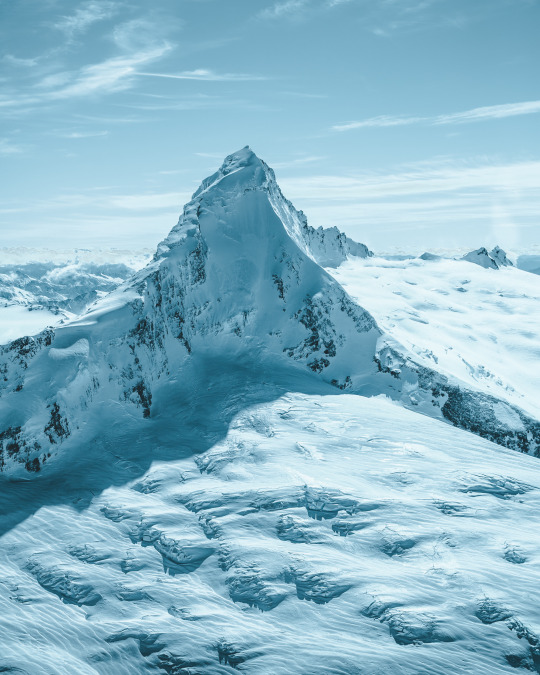
44°14'07.2"S 168°49'35.4"E
www.lakewanaka.co.nz
www.aspiringhelicopters.co.nz
instagram/oftwolands
www.oftwolands.com
#new zealand#Mt Aspiring#mt aspiring national park#Wanaka#Lake Wanaka#Southern Alps#travel#explore#window seat#mountains#snow#epic#Adventure#outdoor#ice#glacier#middle earth#nz#otago#lord of the rings#of two lands
806 notes
·
View notes
Text

My backyard
12 notes
·
View notes